#Hermann Ebbinghaus
Text
ebbinghaus, please help me keep my memory intact kal :)
#psychology#hermann ebbinghaus#desiblr#desi tag#desi academia#desi dark academia#desi#desi girl#desi tumblr#desi things#rant#cbse#tests#exams#class 11#humanities
2 notes
·
View notes
Text
Maximizing Learning with Microlearning: Understanding Ebbinghaus' Forgetting Curve

In the realm of training, the quest for optimized learning methodologies is an ongoing endeavor. From traditional classroom settings to modern digital platforms, educators and instructional designers are continually seeking methods to enhance retention and maximize learning efficiency. One such approach gaining prominence is microlearning, a technique rooted in cognitive science principles and epitomized by its ability to counteract the challenges posed by the Ebbinghaus Forgetting Curve.
Introduction to Microlearning
Microlearning is a pedagogical strategy that involves delivering small, focused units of learning material to learners, typically through digital platforms, with the aim of catering to short attention spans and maximizing retention. Unlike traditional lengthy lectures or courses, microlearning breaks down information into bite-sized modules, making it easier for learners to absorb and retain knowledge.
Understanding Ebbinghaus' Forgetting Curve
The Ebbinghaus Forgetting Curve, proposed by German psychologist Hermann Ebbinghaus in the late 19th century, illustrates the rate at which information is forgotten over time when there is no attempt to retain it. Ebbinghaus conducted experiments on himself, memorizing lists of nonsense syllables and then testing his recall at various intervals. His findings revealed a consistent pattern: rapid forgetting shortly after learning, followed by a gradual decline over time.
Ebbinghaus' Curve of Forgetting
Ebbinghaus' Curve of Forgetting graphically represents the phenomenon described by the Forgetting Curve. It depicts the percentage of information retained over time after an initial learning experience. The curve shows a steep decline in retention shortly after learning, with a gradual plateau reached over subsequent days.
The Forgetting Curve Phenomenon
The Forgetting Curve phenomenon highlights the importance of reinforcement and spaced repetition in the learning process. It underscores the notion that without deliberate efforts to reinforce learned material, retention diminishes rapidly. However, by strategically revisiting and reviewing information over spaced intervals, learners can significantly improve retention and counteract the effects of the Forgetting Curve.
Harnessing Microlearning to Combat Forgetting
Microlearning aligns closely with the principles of spaced repetition and reinforcement, making it an effective tool for combating the Forgetting Curve. By delivering concise, targeted content in short bursts, microlearning facilitates frequent exposure to information, thereby reinforcing learning and enhancing retention.
The Learning Curve vs. The Forgetting Curve
While the Forgetting Curve illustrates the decline in retention over time, the Learning Curve represents the opposite phenomenon – the increase in knowledge or skill acquisition over time with repeated practice and learning. Understanding the interplay between these curves is essential for devising effective learning strategies.
The Significance of a Steep Learning Curve
In common parlance, the term "steep learning curve" often refers to a challenging learning process that requires significant effort and adaptation. However, in educational contexts, a steep learning curve can have positive connotations, indicating rapid progress and acquisition of knowledge or skills. It signifies a learning experience characterized by a steep ascent on the Learning Curve, where learners quickly grasp new concepts and demonstrate proficiency.
Maximizing Learning Efficiency with Microlearning
By leveraging microlearning methodologies, educators can capitalize on the principles of spaced repetition and reinforcement to optimize learning efficiency and retention. The modular nature of microlearning allows for flexibility and customization, catering to diverse learning styles and preferences. Additionally, microlearning lends itself well to modern digital platforms, enabling learners to access content anytime, anywhere, thus fostering continuous learning and skill development.
Conclusion
In the quest to maximize learning efficiency and retention, understanding the principles of the Ebbinghaus Forgetting Curve is paramount. Microlearning emerges as a potent strategy for combating the challenges posed by the Forgetting Curve, offering a tailored approach to knowledge dissemination and retention. By harnessing the power of microlearning, educators and learners alike can navigate the complexities of the learning process with greater efficacy, paving the way for lifelong learning and continuous improvement.
#what is the forgetting curve#which of the following best illustrates ebbinghaus forgetting curve#what is ebbinghaus forgetting curve#what is the curve of forgetting#hermann ebbinghaus#ebbinghaus forgetting curve#ebbinghaus's curve of forgetting#forgetting curve#the forgetting curve#curve of forgetting by hermann ebbinghaus#ebbinghaus retention curve#learning curve#learning curve meaning#steep learning curve meaning#what is a learning curve#forget curve#curve of forgetting#microlearning app#microlearning platform#micro learning platforms#micro learning apps#best microlearning platforms#microlearning tools#microlearning software#microlearning lms#free microlearning apps#best micro learning apps#best microlearning apps#microlearning companies#microlearning solutions
0 notes
Text
Friedrich Ebbinghaus Thoughts ! (From a Psych Student)
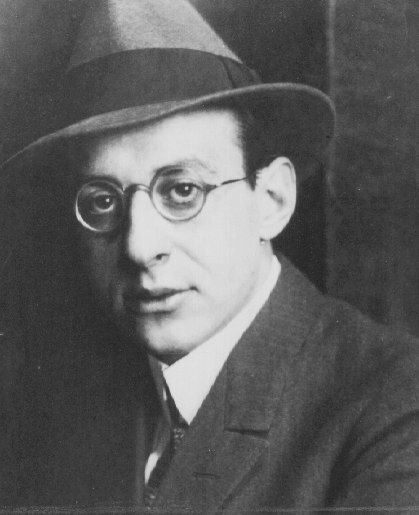
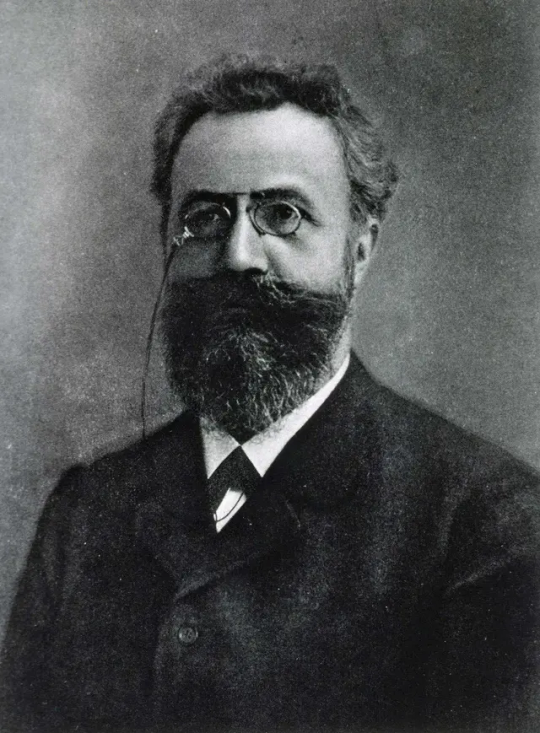
OKAY!! Like the title says I am a psych student. This is one of the reasons I love Sigmund so much. He's a psychologist (who seems like based on subtext, specializes in cognition. imo.) which is fucking sick.
THAT BEING SAID. I love Sigmund's pseudonym so much. Lemme explain lemme explain.
I know for a fact the last name is from Hermann Ebbinghaus. Bc who else. And guess what baby Ebbinghaus was known for his research in MEMORY. THE FORGETTING CURVE. The Forgetting Curve suggests that people tend to continually halve their memory of newly learned knowledge in a matter of days or weeks unless they actively review the learned material. beautiful love to see it. And the testing for that was super interesting blah blah blah I'm not gonna get into it.
However, I was trying to think where Friedrich comes from. I initially thought of Friedrich Nietzsche. But that didn't make sense in my head all the way. THEN I REMEMBERED FRIEDRICH PERLS BITCH !!!! He coined "Gestalt Therapy" Which is a form of psychotherapy that's centered on increasing a person's awareness, freedom, and self-direction. Alleviating unresolved negative feelings like anger, pain, anxiety, resentment, and all that good stuff !!!! AND THAT MAKES SO MUCH SENSE WITH HIS PERSONALITY AND THE STUFF HE WRITES IT'S INSANE.
Now okay I know these are just theories but oh my god. It's so fun to think about and it DEFINITELY feels intentional. God bless. I am Sigmund's target audience.
#seadogs#seadogscamp#serpentsdemise#comfort show#pirates#mistyeye#comfort character#doctorsigmundbyrne#psychology#cognitive psychology#friedrichperls#hermannebbinghaus
4 notes
·
View notes
Text
youtube
Another good band to check out is 遺忘曲線 Forgetting Curve from Guangzhou. =D
I have so little info on this unit, not even a weibo site. And I only just saw them featured this week on Zoo Chronicle 動樂記 channel. (very good channel for promoting mainland bands on YT)
I found these members: 何嘉棋 MusicK-Voc/Gtr, 雷子-Lead Gtr, 小北-Bass, Gihong-Drums.
The name 遺忘曲線 Forgetting Curve is a problem for people looking for the band, because it's a scientific/psychological term. The name comes from Hermann Ebbinghaus' The forgetting curve, which hypothesizes the decline of memory retention in time. (wikipedia links).
There is also a British band by that name. If anybody has some links for 遺忘曲線 Forgetting Curve, please let me know. =)
Links: Spotify
There is/was another Guangzhou band we featured called Yu Fei Men 與非門 (weibo), searching for their name led to the computer term 与非门 NAND gate. (chinese wiki link)
I loved this band, this song is from 2003:
youtube
The English wiki page has some good info, including releases and members. Jiang Fan 蒋凡-voc, Atsing 阿庆; A Qing, prog/gtr, San Shao (三少) songwriter/DJ
#Zoo Chronicle 動樂記#遺忘曲線 Forgetting Curve#China#music video#Yu Fei Men 與非門#YFM (與非門)#sinoprod#Youtube
4 notes
·
View notes
Text
i guess my memory storage is too small to remember my whole precious life cuz for human being life is too amazing
recently i'm afraid of forgetting everything which even i felt it's imp.
i wanna write things which i really don't wanna forget.
Hermann Ebbinghaus 記憶の忘却曲線
Bergson and Ricoeur 記憶と忘却
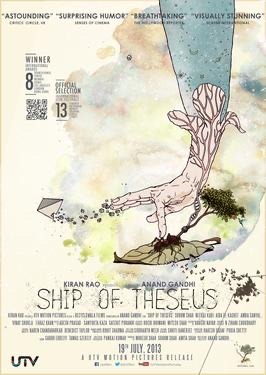









1 note
·
View note
Text
Understanding the Forgetting Curve: A Guide for Trainers

In the realm of education and training, the forgetting curve is a well-established concept that underscores the importance of reinforcement and spaced repetition in the learning process. Trainers play a critical role in helping learners overcome the challenges posed by the forgetting curve and achieve lasting retention of knowledge and skills. Let's delve into the forgetting curve and explore its relevance for trainers in today's learning environments.
What is the Forgetting Curve?
The forgetting curve, first introduced by German psychologist Hermann Ebbinghaus in the late 19th century, illustrates the rate at which we forget newly acquired information over time. According to Ebbinghaus' research, learners tend to forget a significant portion of what they have learned within a short period after initial exposure. The Forgetting Curve demonstrates a rapid decline in memory retention, with much of the information being forgotten within the first few days or weeks after learning.
Factors Influencing the Forgetting Curve
Several factors contribute to the shape and steepness of the forgetting curve:
Lack of Repetition: Without reinforcement and practice, memories decay rapidly over time, leading to a steep forgetting curve. Learners who do not review or revisit learned material are more likely to forget it quickly.
Retention Interval: The length of time between initial learning and subsequent retrieval attempts affects the rate of forgetting. Shorter retention intervals result in slower decay of memory, while longer intervals lead to faster forgetting.
Nature of the Material: The complexity and relevance of the material also influence the forgetting curve. Concepts that are more abstract or difficult to understand may be subject to faster decay, while information that is meaningful and personally relevant is more likely to be retained.
Implications for Trainers
For trainers, understanding the principles of the forgetting curve is essential for designing and delivering effective learning experiences. Here's how trainers can leverage this knowledge to enhance learning outcomes:
Implement Spaced Repetition: To counteract the effects of the forgetting curve, trainers should incorporate spaced repetition into their training programs. By spacing out review sessions over time, trainers can reinforce learning and promote long-term retention of knowledge and skills.
Provide Regular Feedback: Feedback is a powerful tool for combating the forgetting curve and reinforcing learning. Trainers should provide learners with regular feedback on their performance, highlighting areas of strength and areas for improvement. This feedback helps learners identify gaps in their understanding and adjust their learning strategies accordingly.
Encourage Active Learning: Passive learning activities, such as listening to lectures or watching presentations, are less effective at combating the forgetting curve than active learning methods. Trainers should incorporate interactive activities, such as discussions, case studies, and hands-on exercises, to engage learners and promote deeper learning and retention.
Offer Multiple Learning Modalities: People learn in different ways, and trainers should accommodate diverse learning preferences by offering multiple learning modalities. By presenting information in various formats, such as text, audio, video, and interactive simulations, trainers can appeal to different learning styles and enhance comprehension and retention.
Technology's Role in Addressing the Forgetting Curve
Advances in technology have provided trainers with powerful tools for addressing the challenges posed by the forgetting curve. Learning Management Systems (LMS), for example, allow trainers to deliver personalized learning experiences, track learner progress, and schedule spaced repetition activities. Additionally, digital platforms offer a wealth of multimedia resources and interactive learning opportunities that cater to diverse learning preferences.
Reinvent Compliance Training– Using Microlearning With A Risk-Specific Approach
May 7th 2024
9:00 am CST/ 10:00 am EST
45 mins
Ask almost any employee, and they’ll tell you, “It’s long, it’s boring, and most of the stuff I know already.” In this webinar, we will show compliance learning can be fast, fun, and effective.
We will cover:
Micro-targeting based on risk profiling–Integrating compliance risks to job functions to deliver training to the employees who need it.
Learning Goals — Automated assignment of the right learning levels to the right employees as Goals.
Microlearning — Use of short bursts of learning targeted at specific learners based on their risk profile.
Knowledge Growth and Retention — Use of adaptive spaced repetition of content to allow information to be retained and knowledge to grow over time.
Reward and Recognition — Game mechanics at play to promote learner engagement.
We invite you to our groundbreaking discussion on how to deliver fast, fun, and effective risk-specific compliance training.
Register Now!
Conclusion
In conclusion, the forgetting curve presents a significant challenge for trainers seeking to promote long-term retention of knowledge and skills. By understanding the principles of the forgetting curve and implementing effective learning strategies, trainers can help learners overcome the obstacles to memory retention and achieve lasting learning outcomes. With the right approach, trainers can harness the power of spaced repetition, regular feedback, active learning, and technology to combat the forgetting curve and empower learners to succeed in today's dynamic learning environments.
#micro learning#adaptive learning#ai for training#learning personalization#microlearning platforms#ai lms#adaptive learning platforms#gamified lms#lms with gamification#lms with ai#adaptive learning software#adaptive learning technology#gamified learning management system#learning management system gamification#artificial intelligence in learning and development
0 notes
Text
la memoria
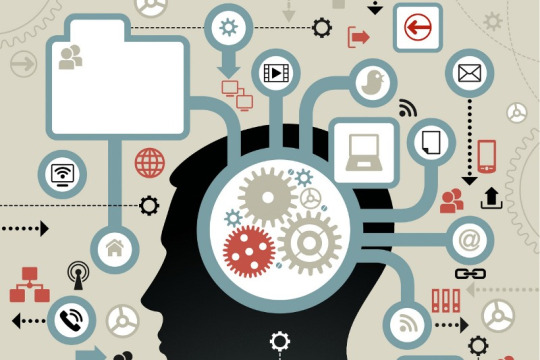
Jose Ángel Cequeira comenta
El término memoria proviene del latín memoria, y es entendido como la capacidad o facultad de retener y recordar información del pasado. Al ser un término utilizado en diversas materias y disciplinas, las definiciones más precisas surgen en ámbitos particulares.
Desde la psicología y la medicina se tiene una concepción similar del término memoria, ya que en ambos casos se lo entiende como la facultad mental que permite reconocer, almacenar y evocar sentimientos, ideas, imágenes, entre otras experiencias. Además nos permite reconocerlas como propias. Son enumerados distintos tipos de memorias, algunos de ellos son:
Memoria en relación al tiempo
Memoria a largo plazo. Esta memoria hace referencia a los datos o información que pueden ser retenidos durante muchos años. Algunos ejemplos podrían ser la dirección de la casa donde se vivió en la niñez, la fecha de cumpleaños de algún familiar o amigo, etc.
Memoria a corto plazo. En este caso los datos e información recibe un análisis sensorial pero es retenido por cortos lapsos de tiempo.
Memoria inmediata. Este tipo de memoria permite realizar un análisis de la información que ha sido captada por los sentidos de manera sumamente veloz.
Memoria gustativa. Memoria que se relaciona con los sabores y gustos, por ejemplo de las comidas. Es una de las memorias menos desarrolladas por los seres humanos. Sin embargo los catadores, por ejemplo de vino, si recurren a ella constantemente para realizar comparaciones.
Memoria visual. Es la que permite registrar aquellas cosas que han sido captadas por medio del sentido de la vista. Gracias a este tipo de memoria resulta posible recordar por ejemplo el rosto de las personas o recordar lo que se lee.
Memoria auditiva. La memoria que nos permite recordar aquello que escuchamos es considerada la más importante ya que a ella se le debe el habla. Además nos permite almacenar otros sonidos, como ruidos, canciones, tonos, entre otros.
Memoria del tacto. Es aquella que permite que las texturas o superficies de los objetos sean reconocidas.
Memoria olfativa. Nos permite recordar y reconocer aromas, por ejemplo el aroma de una comida o de una flor.
¿Por qué es importante la memoria?
La memoria resulta un elemento fundamental en la vida de las personas en distintos aspectos:
En primer lugar nos permite acceder a una identidad gracias al reconocimiento de las experiencias vividas.
Por otro lado es muy importante en el proceso de sociabilización ya que nos permite reconocernos no solo a nosotros mismos si no también a aquellos que nos rodean.
Además, el concepto de memoria se encuentra muy ligado al del aprendizaje. Si bien muchos especialistas los reconocen como dos procesos independientes, a la memoria es una herramienta muy útil para poder aprender.
Autores
HERMANN EBBINGHAUS
Nació el 24 de enero en 1850,Barmen, Prusia remana, murió 26 de febrero de 1909 en Hall, Alemania, estudió en la Universidad de Bonn, donde obtuvo su doctorado en 1873 obtiene su título en filosofía con una tesis que hablaba acerca de la filosofía del inconsciente de Von Hartmann
Estudio historia y filología en las universidades de Bonn, Halle y Berlín. Estudio independientemente un post-doctorado en Inglaterra, Francia y Alemania
TEMAS DE INVESTIGACIÓN:
Entre 1878 y 1879 realizó su primera serie de experimentos sobre la memoria.
De 1880 a 1893 fue profesor de la universidad de Berlín. Entre 1883 y 1884 realiza una segunda serie de experimentos sobre memoria.
En 1886 inaugura un laboratorio de psicología experimental en la Universidad de Berlín. En 1890 es Co-fundador de la Psicología Zeitschrift für Physiologie und der Sinnersorgane (Diario de Psicología y Fisiología de los órganos sensoriales)
Ebbinghaus en 1885 publico sus estudios sobre la memoria, el recuerdo fue considerado como objeto de estudio experimental. Pero algunas de sus afirmaciones se encuentran en discusión; tal es el caso de "la curva del olvido", que hace referencia a que el material apenas aprendido tiende a ser olvidado rápidamente al principio y luego con más lentitud.
0 notes
Text
Memória: Entenda como funciona a curva de esquecimento proposta por Ebbinghaus

A memória é uma das funções cognitivas mais importantes do ser humano. Ela nos permite lembrar de eventos passados, aprender novas informações e tomar decisões com base em experiências anteriores. No entanto, a memória não é perfeita e pode ser afetada por diversos fatores, incluindo a passagem do tempo. Foi justamente esse tema que motivou o psicólogo alemão Hermann Ebbinghaus a desenvolver a curva do esquecimento.
Ebbinghaus foi um pioneiro no estudo científico da memória. Ele realizou diversos experimentos em si mesmo para avaliar a forma como as pessoas esquecem informações ao longo do tempo. Em um desses experimentos, Ebbinghaus memorizou uma lista de palavras sem sentido (por exemplo, "wug", "zif" e "kef") e, em seguida, avaliou quanto tempo levaria para esquecê-las completamente. Ele descobriu que a maioria das palavras era esquecida rapidamente, mas que a curva do esquecimento seguia um padrão previsível.
A curva do esquecimento de Ebbinghaus descreve a forma como as pessoas esquecem informações ao longo do tempo. Ela mostra que, logo após o aprendizado, a retenção de informações é alta, mas que essa retenção diminui rapidamente nos primeiros dias após o aprendizado. De acordo com a curva do esquecimento, cerca de metade das informações aprendidas é esquecida em apenas algumas horas. Após uma semana, a retenção cai para cerca de 20%, e depois disso ela se estabiliza em um nível relativamente baixo.
A curva do esquecimento de Ebbinghaus é importante porque nos ajuda a entender como a memória funciona e como podemos melhorar nossa capacidade de lembrar informações. Por exemplo, ela sugere que é importante revisar as informações que queremos lembrar várias vezes ao longo do tempo, em vez de simplesmente tentar memorizá-las de uma só vez. Também sugere que a repetição espaçada, em que as informações são revisadas em intervalos cada vez maiores, pode ser uma técnica eficaz para melhorar a retenção a longo prazo.
Além disso, a curva do esquecimento de Ebbinghaus mostra que o tempo é um fator importante na formação de memórias. Isso significa que o momento em que aprendemos algo e a frequência com que o revisamos são fatores importantes para determinar se vamos lembrar dessa informação no futuro. A curva do esquecimento também nos lembra que a memória é falível e que é comum esquecermos informações importantes ao longo do tempo.
A curva do esquecimento de Ebbinghaus é uma descoberta importante na psicologia da memória. Ela nos ajuda a entender como a memória funciona e como podemos melhorar nossa capacidade de lembrar informações. Embora seja inevitável esquecermos algumas informações ao longo do tempo, a curva do esquecimento sugere que é possível melhorar nossa retenção de informações com técnicas simples como a repetição espaçada. Ao compreender a curva do esquecimento e suas implicações, podemos melhorar nossa capacidade de lembrar informações.
Existem diversas teorias que tentam explicar os mecanismos subjacentes à curva do esquecimento de Ebbinghaus. Uma das mais populares é a teoria da interferência. Segundo essa teoria, a informação que aprendemos pode ser prejudicada por informações semelhantes que aprendemos antes ou depois. Por exemplo, se aprendemos duas listas de palavras sem sentido em sequência, é mais provável que as palavras das duas listas se misturem em nossa memória, o que pode dificultar a recuperação das informações mais antigas.
Outra teoria que tenta explicar a curva do esquecimento é a teoria da degradação. De acordo com essa teoria, a informação que aprendemos é gradualmente esquecida devido a processos biológicos e neurológicos. Por exemplo, as conexões neurais que sustentam a memória podem se enfraquecer com o tempo, o que torna mais difícil a recuperação das informações antigas.
Independentemente da teoria subjacente, a curva do esquecimento de Ebbinghaus é um lembrete importante de que a memória é uma função cognitiva dinâmica que está sempre mudando. As informações que aprendemos hoje podem ser esquecidas amanhã, e as informações que esquecemos hoje podem ser recuperadas no futuro. Por isso, é importante adotar estratégias eficazes para melhorar nossa capacidade de lembrar informações.
Uma das estratégias mais eficazes para melhorar a retenção de informações é a repetição espaçada. Essa técnica envolve revisar as informações em intervalos crescentes de tempo. Por exemplo, em vez de revisar uma lista de palavras sem sentido várias vezes em um único dia, podemos revisar a lista uma vez por dia durante uma semana, e depois revisá-la uma vez por semana durante um mês. A repetição espaçada ajuda a consolidar a memória a longo prazo, evitando a interferência e a degradação que podem ocorrer quando revisamos informações com muita frequência.
Outra estratégia útil é a elaboração. Essa técnica envolve conectar novas informações a conhecimentos prévios e/ou criar histórias mentais que ajudem a tornar as informações mais significativas e memoráveis. Por exemplo, se estamos tentando memorizar uma lista de palavras sem sentido, podemos tentar criar uma história em que cada palavra desempenha um papel importante. Essa história ajudará a tornar as palavras mais memoráveis, e também ajudará a conectar as informações novas com nosso conhecimento prévio.
Por fim, é importante lembrar que a memória é uma função cognitiva que varia de pessoa para pessoa. Algumas pessoas têm uma memória mais forte do que outras, e algumas pessoas são mais propensas a esquecer informações em certas situações do que outras. Por isso, é importante experimentar diferentes técnicas e estratégias para descobrir o que funciona melhor para cada indivíduo.
Em conclusão, a curva do esquecimento de Ebbinghaus é uma descoberta importante na psicologia da memória que nos ajuda a entender como a memória funciona e como podemos melhorar nossa capacidade de lembrar informações. A repetição espaçada e a elaboração são duas estratégias úteis para melhorar a retenção de informações.
0 notes
Text

As per the 'Forgetting Curve' of German psychologist Hermann Ebbinghaus, 70% of learning is forgotten within 24 hours of training and 90% is lost within a week. DigiProctor ensures that the continuous testing is done smoothly so the students are not expected to cram everything at the end of the course.
#onlineproctoring#digitalexams#EdTech#AIproctoredexams#costeffective#improvedefficiency#ehancedexamsecurity#continousassessment#enhancedreach
0 notes
Text
Mengatasi Sifat Malas [Metode Disiplin Orang Jepang]
Orang Jepang dilatih untuk mengulang berbagai macam ritunitas kecil yang positif setiap harinya.
Rutinitas yang dilakukan terus menerus akan berubah menjadi budaya.
Budaya KAIZEN
. Kai: berubah
. Zen: kebijaksanaan
. Kaizen: perubahan dalam hidup dapat dicapai secara perlahan dan dengan penuh kebijaksanaan
Prinsip 1 menit
. Melatih seseorang untuk melakukan sesuatu hanya dalam satu menit setiap harinya di waktu yang sama
. Prinsip ini untuk melatih tanggung jawab
. Efek positif dari prinsip ini adalah adanya sense of progress, yang membuat kita ketagihkan karena merasa sudah bertanggung jawab dengan tugas yang dimiliki dan sudah menyelesaikan tugas tersebut.
. Kunci dari prinsip ini adalah konsistensi, agar dapat menjadi sebuah kebiasaan
Usaha yang terlalu keras dan tidak rutin akan menghabiskan tenaga dan membuat lebih lelah.
Efeknya, kita akan menjadi malas, bosan dan akhirnya tidak dilakukan secara rutin.
Mengerjakan sedikit tetapi rutin akan lebih baik jika dibandingkan dengan mengerjakan banyak hal sekaligus.
. Mengerjakan sedikit tetapi rutin membuat kita lebih menguasai hal yang kita kerjakan dan tidak mudah lupa.
Memori dan Kemampuan Mengingat.
. Teori dari Hermann Ebbinghaus, seorang psikolog dari Jerman.
. Kemampuan mengingat seseorang akan menurun drastis kalau hanya mendapatkan banyak informasi langsung sekaligus banyak, dan apabila informasi tersebut tidak pernah di-review atau diulang kembali.
. Repetisi membuat kita lebih mengerti dan pada akhirnya masuk dalam longterm memory.
Dengan mengulang suatu hal, maka kita akan membangun kebiasaan, dan apabila sudah menjadi kebiasaan, maka kita akan menjadi master dalam hal tersebut.
Prinsip kaizen ini dapat dilakukan oleh siapapun dan dalam bidang kehidupan apapun.
source: Satu Persen Indonesian Life School [link]
0 notes
Text
Mis ilusiones preferidas
Parte 3 de la tarea 5 del primer trimestre de cultura audiovisual de 1 de bachillerato en la que voy a hablar de dos ilusiones ópticas .
La primera se llama " ilusión de las serpientes "
Está ilusión , fue creada por el japonés Akiyoshi KITAOKA para tratar el cerebro y la cognición y trata sobre cómo vemos cosas que parecen que se mueven pero en realidad son estáticas, supuestas alucinaciones visuales… y esto es debido a la retina y sus células además de cómo está dibujado para que parezca que en movimiento cuando en realidad no .

La segunda , La ilusión de Tichener
Está ilusión , la de Ebbinghaus Titchener , lo trato el psicólogo Hermann Ebbinghaus , que de nuevo trata lo que vemos que quizás no sea así . En este caso , vemos que los círculos naranjas tienen diferentes tamaños pero al parecer son del mismo ... Esto cambia solo por lo que rodea a los círculos es más grande o pequeño
Además este tipo de ilusiones expuestas , también trata como puede influir en lo que vemos nuestra cultura , emociones , educación ... Etc

0 notes
Photo

Sylvain Sailly
Size, 2010
Animated GIF, 720 x 720 pixels, 210 frames, B&W and transparency , 25fps,
https://www.hicetnunc.xyz/objkt/76368
#Sylvain Sailly#SylvainSailly#plus size#Animated GIF#gif#optical illusion#Ebbinghaus#Hermann Ebbinghaus#Ebbinghaus illusion#titchener circles
1 note
·
View note
Link
New neurons lead to memory loss, or ‘retrieval failure’:
The notion that forgetting is a hidden educational virtue goes back a century or more. In a series of studies, the German psychologist Hermann Ebbinghaus found that when people relearn information, they’re more likely to recall that information in the future.
Research explains why forgetting delivers this memory boost. Memories don’t fly out of our brains like sparrows from a barn. Instead, our brain will make memories more or less accessible. Some recollections, like the name of a close friend, are easily recalled. Other details, like the color of your childhood bedroom, have been tucked into deep storage and are much harder — if not impossible — to retrieve.
In this sense, a forgotten memory is a lot like an old file on your computer. While the document still exists, you don’t have a good way of getting to it, and today many memory researchers don’t even use the word “forgetting.” The term implies that a recollection is gone forever. Instead, forgetting is a matter of “retrieval failure.”
Besides the occasional memory gaffe, the brain’s approach to forgetting serves us well, and our retrieval failures help prune away memories that we don’t really need. Or consider living with an unending library of easily recalled memories. It would be overwhelming: Dates, names, phone numbers — they would all be constantly top of mind.
“You don’t want everything to be recalled,” said Robert A. Bjork, a researcher at the University of California, Los Angeles. “You want to remember where you parked the car today, not yesterday or a week ago.”
In this model of forgetting, when we extract a detail from the brain’s long-term storage, that detail becomes easier to recall in the future. “To remember something important, you have to keep experiencing it,” Professor Bjork said.
So if you want to recall where you parked the car today, then practice remembering that specific location. If you want to easily summon the names of state capitals, then make sure to draw regularly on the names of state capitals.
Our brain is built to foster this sort of forgetting and remembering, according to a paper released in June in the journal Neuron. In the article, the researchers argue that many of the brain cells associated with memory actively foster memory loss. “The growth of new neurons seems to promote forgetting,” the researcher Blake Richards said. “If you add new neurons, it effectively overwrites memories and erases them.”
The benefits of forgetting go far beyond facts or even brain cells, and when we relearn something that we’ve forgotten, we often gain deeper forms of insight. Think of Marcel Proust’s famous literary bite of a madeleine, then, as not just “a remembrance of things past” but also an effective form of developing expertise.
To a degree, the value of such forgetting is self-evident, and when people re-engage an area of expertise, they have more perspective. They’re better able to spot connections.
In much the same way, weak memories can improve understanding. The researchers Neechi Mosha and Edwin Robertson showed that a weak recollection can make it easier for people to solve problems. “If the memory is too rigid, you can miss the conceptual forest,” Professor Robertson said.
Studies show that forgetting can even promote better reasoning. In a study released in 2011, a group of psychologists gave some subjects a problem-solving exam. Known as the Remote Associates Test, it requires a subject to read three words (like “playing,” “credit” and “report”) and then come up with a word that would link all three ideas (“card”).
The researchers added a wrinkle to the test, and they provided the subjects with some “misleading” training, giving the subjects the wrong cues before they took the exam. The results showed that people had to push the misleading association out of their minds to solve the problem. “Creative cognition,” the authors wrote, “may rely not only on one’s ability to remember but also on one’s ability to forget.”
13 notes
·
View notes
Text
Cognition
Models of Memory
Memory is an extremely difficult subject to study due to its subversive and subjective nature. Thus, many models have been proposed which describe how memories are processed by our brain. The two major ones are the three-box model and the levels of processing model.
Three-box model
This model of memory is also known as the information-processing model. It describes how the brain processes information (hence the name). Our sensory memory processes external events. Some of that information is encoded by the short-term/working memory. Some of that information is then encoded by the long-term memory.

Sensory Memory: The sensory memory only lasts for a fraction of a second and consists of the information you are processing right now. George Sperling demonstrated this memory with his experiment, where he would flash a 9 letter grid to subjects for a split second. The subjects were then asked to recall either the top middle or bottom row letters immediately after they appeared. They were able to recite the letters, showing that that information was being stored for a short amount of time. This type of sensory memory is called iconic memory- a short lived photograph of a scene. There is also echoic memory, which is another short lived memory for sounds rather than pictures. Events that are encoded into the working memory are encoded as visual codes (a visual), acoustic codes (a collection of sounds), or semantic codes (the meaning of the event). In order to decide which memories are encoded into the working memory, the brain depends on selective attention. This means that information that is important to us is encoded. This is why we are able to ignore certain stimuli such as the sound of a fan, or the feeling of our clothes because they are not being encoded into the working memory. This is what makes the cocktail party effect work.
Short-term memory: Short-term memory is known as working memory because they’re the memories we’re working with in the present moment. They last longer than sensory memories, but not very long; usually around 10-30 seconds. Our short-term memory caps at around 7. In his experiments, George Miller found this number, and titled his research “The Magical Number 7, Plus or Minus Two.” So how do we improve the functionality of our short-term memory? One method is through chunking. Take psychology; there’s a lot of vocabulary to memories. If you try and memorise all of those words a couple nights before the exam, you’re not going to have much luck. Instead, it’s better to chunk that massive list into groups of 7. Another example of chunking is the famous mnemonic device; My Very Excellent Mother Just Served Us Nine Pizzas, where the names and order of the planets are chunked into the first letters of each word in the sentence. Another trick is to rehearse the information. Instead of staring at your vocabulary list, repeat the words you’ve chunked to yourself over and over again, thus maintaining that information in your short-term memory.
Long-term memory: These strategies are great for keeping information in our short-term memory, but the best strategies are ones that help encode that information into long-term memory, as it is our permanent storage. So far, it seems that long-term memories storage potential is unlimited. Once information makes it to our long-term memory, it stays- although it is subject to decay. It is stored in three different ways:
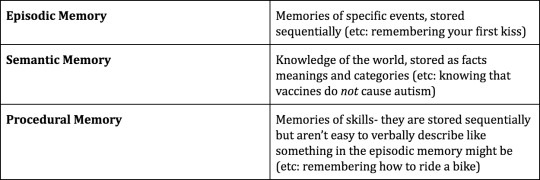
Memories can be explicit of implicit.
Explicit memories: Also known as declarative memories, these are usually what first come to our mind. They’re conscious memories that we actively try to remember. For example, at the moment, you’re trying to form explicit memories about psychology.
Implicit memories: Also known as non-declarative memories, these are memories we form unintentionally. You may realise when trying to cook lunch that you’ve managed to form an implicit memory on how to cook grandma’s famous pasta because you’ve watched her do it so many times.
An interesting phenomenon involves individuals with eidetic or photographic memory. Alexander Luria studied a patient who could repeat a list of 70 letters backwards, and could remember it as far as 15 years later.
Levels of Processing Model
Instead of describing memory in steps, this theory maintains that memories are either deeply/elaboratively processed or shallowly/maintenance processed. If to study for an upcoming psychology exam, you repeat a list of vocabulary words to yourself over and over again, you’ve shallowly processed that information, and will go away soon after you’ve taken your test. If you, however study those vocabulary words and do intensive research into each term, you’ve deeply processed those words, and will most likely be able to remember them long after your exam. The more cognitive energy you expend trying to remember something, the longer that memory will last. This model explains why we remember stories and questions better than boring old recitation of events and statements. We find the former more interesting, and more deeply process them.
Retrieval
All memory models end with retrieval. It is the process of taking information out of memory so it can be useful to us. Recognition is a process where we match a fact with one we already have stored in our memory. (”Where have I heard that song?”) Recall is retrieving a memory based on an external cue. (”What did grandma’s pasta taste like?”) There are all kinds of things that change why we’re able to retrieve some memories and why we lose others.
One factor was found by the early psychologist Hermann Ebbinghaus. He found that the order that things are presented in a list influence which things we remember. The primary effect states that we are more likely to remember the first few items on the list, while the recency effect states we are more likely to remember the last few items on that list. Both of these effects come together to form the serial position effect. The serial position effect indicates that we are the least likely to remember words in the middle of a list.
Another factor is context. Something that happens to all of us is the tip-of-the-tongue phenomenon. When I was taking my SAT Biology exam, I completely forgot the word “commensalism.” I sat there thinking facts that I knew about it; it’s a symbiotic relationship, it’s the relationship where one organism is helped and one isn’t hurt or helped” “I watched a youtube video about it” and although I remembered all these facts, it took me a second to remember the actual word. A theory that helps explain why this happens is the semantic network theory. This theory states that our brain forms new memories by joining their meaning and their context with those that already exist in our memory, forming an interlocking web full of memories. So when I was listing facts that I could remember about commensalism, I was making my way through the web, until I finally came across the word. Another phenomenon caused by context are flashbulb memories. When you ask someone who was conscious during 9/11, often they can give detailed descriptions of where they were and what they were doing. This is a flashbulb memory; where the importance causes us to encode more than we normally would.
The emotional context also affects retrieval. Mood-congruent memory is an interesting phenomenon, where you’re more likely to remember something when your mood matches the mood you were in at the time of the event. State-dependent memory is a similar phenomenon, where the state you’re in (for example, drowsy) allows you to retrieve memories from when you were in a similar state.
Constructive Memory
As much as we’d like to believe that it is, memory is not perfect. An example of this is the “recovered memory” phenomenon, where someone seems to “recover” a repressed memory that is actually a false memory based on outside influence. This phenomenon was discovered by Elizabeth Loftus. A constructed memory is a memory that contains false details of a real event, or a fake event altogether. This is why eyewitness accounts can prove to be problematic in police investigations. The way a policeman asks their question can completely change how the eyewitness remembers the event.
Forgetting
A number of things lead to forgetting. One example is decay where memories or connections that we don’t use a lot fade after a while. I used to be able to label every European country when I was younger, but now I’ll be lucky if I can get 15. These memories aren’t gone forever though; the relearning effect has shown that it takes less time recovering these memories than it took the first time. Another thing that causes forgetting is interference. There are two main types: retroactive interference and proactive interference. Retroactive interference is when learning something new hurts your ability to recall older information. Proactive interference is when something you learned a while ago interferes with your ability to learn newer information. A friend of mine told me a fun pneumonic that helps me remember the meaning of these two words: PORN- Proactive, Old interferes with new, Retroactive, New interferes with old.
How Memories are Stored
We know very little about the biological process of memory storage. Research performed on patients with brain damage has shown the hippocampus’ importance in encoding new memories. Patients with a damaged hippocampus had a condition known as anterograde amnesia, where new memories couldn’t form properly, but old memories could be recalled. Think of Dory from finding Nemo. Further connecting to Dory, remember how she could read but couldn’t remember that she could read? Researchers have found this phenomenon typical when studying anterograde amnesiacs, where they can learn and remember new skills but can’t remember learning that skill, showing that procedural memory is stored elsewhere in the brain. When studying memories, researchers tend to focus on long-term potentiation. As neurons fire more and more, their connections can strengthen, making the receiving neuron more sensitive to messages.
Language
Elements of Language
All languages are built with morphemes and phonemes. Phonemes are the smallest unit of sound in a language. non-English speakers and non-Americans tend to have trouble with the American R- a phoneme that is particularly difficult to recreate. On the flip side, Americans tend to have trouble recreating the Spanish R, while a native Spanish speaker would find that phoneme easy to make. Morphemes are the smallest unit of meaning in a language. Morphemes can be words like “but” and “the” letter like “a” or “I” and prefixes and suffixes like “pre-” and “an-.” Phonemes make up morphemes, and morphemes make up words. The words are organised in a particular order which is known as syntax. Different languages have different syntaxes which can be difficult for non-native speakers to wrap their head around. In english, the order that adjectives are used to describe a word is very particular, and while unconscious for us, is extremely tricky for learners. When describing a dress that you just bought, would you say “my velvet, dinner, new dress? Or would you say “my new velvet dinner dress?” At the same time, in french, the syntax of adjectives can be very frustrating for us to learn. For example, the sentence: Ma ancienne lycée means the high school I formerly attended, while the sentence Ma lycée ancienne means my antique high school.
Language Acquisition
Studies performed by developmental psychologists have shown that while babies who are learning different languages are developing, they move through the same basic stages. The first step of language acquisition is babbling, and occurs when the baby is typically around 4 months old. Babbling is innate, as shown by the fact that even deaf babies babble. Babbling is a babies way of experimenting with different phonemes, and at this point they can recreate all possible phonemes- this is why teaching a baby or very young child a new language can cause the accent to stick. As the baby continues to develop, the phonemes from its primary languages stick, and they lose the others. Babies will then move from babbling to single words (holophrases) which is aptly names the holophrastic/one-word stage, and normally occurs when the baby is one year old. The next milestone is telegraphic speech or the two-word stage. This typically is around 18 months. Toddlers will smash the words they know into basic commands; “No play!”- They have meaning down (”I don’t want to play right now!”), but are still working on grammar and syntax rules. As they learn these rules, they tend to misapply them. For example, a toddler may learn that “ed” indicates past tense, and may say “I runned to the store!” This is known as overgeneralisation or overregularisation.
The specifics of how we acquire language is a bit controversial. Behaviorists think that language is learnt through operant conditioning and shaping. If a baby makes a phoneme that exists in the parents language, or says a word, the parents will smile or pay more attention to the baby, reinforcing that behaviour. Cognitive psychologists challenge this idea. Noam Chomsky stated that humans are born with a language acquisition device. This is known as the nativist theory of language acquisition. He used children who had been deprived of language when they were young to show that there is a critical period for language learning. Today’s psychologists believe it is a combination of these two ideas.
Language and Cognition
How does language influence how we think? I know that personally, my personality changes when I am speaking French versus when I’m speaking English, and I know that I’m not alone. Benjamin Whorf theorised that the language we use affects and limits how we think. This is the linguistic relativity hypothesis. While studies have proven that language effects how we think about people, objects, and ideas, few have shown a drastic change in what we are able to think about.
Thinking and Creativity
Describing Thought
Describing thought is a monumental task; descriptions count as thoughts, so if I can get meta for a moment; we have to use thought to describe thought. It’s immensely difficult to create a global definition of thought, so psychologists tend to describe categories of thoughts instead. Concepts are similar to schemas. Everyone has cognitive rules we use to process our environments, and categorise objects, people, and ideas. We tend to base our concepts on prototypes, or what we think is most typical of a concept. Another kind of thought is an image, a mental picture we have in our mind of the world.
Problem Solving
There are two main kinds of problem solving, and like anything have their drawbacks and their advantages. Say you have a safe to open, and you don’t know the combination. There are two simple ways you can try and open it.
Algorithms: A simple, but arduous way to solve your safe problem is to try every single combination. This is an algorithm and is defined as a rule that guarantees the right solution by using a formula or other foolproof method.
Heuristics: If that safe combination is more than 2 numbers, you could be there all day just punching in numbers. Another thing you could try is using numbers that make up years you know are important to the owner of the safe. This is a heuristic. A heuristic isn’t foolproof and doesn’t guarantee a solution but can seriously shave down the time you spend solving your problem. There are severals of heuristics. Two of the main ones are representative heuristics and availability heuristics.
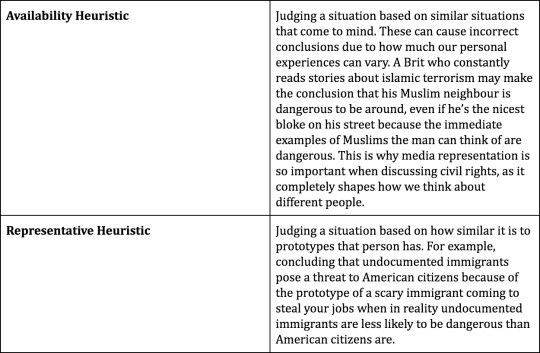
Heuristics can lead to overconfidence as we overestimate how good our judgements really are. This can lead to belief bias, and belief perseverance. Belief biases are illogical conclusions that we make to confirm preexisting beliefs. Belief perseverance is the tendency to maintain a belief even when evidence proves contradictory.
Impediments to problem solving:
Rigidity/mental set: The tendency to fall back into comfortable thought patterns. People tend to use problem solving methods that worked in the past to solve a new problem- this can cause people to ignore new solutions. A specific example of rigidity is functional fixedness which is the inability to see a new use for a specific object. Books are for reading, cups are for drinking, and clothes are for wearing. One time I accidentally spilled my tea on my desk, and instead of using the old shirt that was sitting next to my desk, I ran to grab a towel, allowing the tea to get everywhere and nearly ruin my computer.
Not breaking the problem into parts: Research has proven that by breaking a big problem down into smaller, manageable chunks, tackling the problem is significantly easier and tends to lead to success.
Confirmation bias: When we have made a conclusion about something, when researching it, we tend to ignore research that proves that conclusion wrong. This is why anti-vaxxers can spend hours scouring the internet and pull away one or two studies proving their point right, and completely ignore hundreds of articles that prove them wrong.
Framing: The way a problem is framed can completely impact our ability to solve that problem. If I were to give you a tricky math problem and tell you “99% of people have solved this problem,” you’d likely go into it not expecting much difficulty, while if I told you “99% of people can’t solve this problem,” you’d likely go in expecting something really difficult. This can completely change how able you are to solve a problem.
Creativity
How do you define creativity? Even harder: how do you find a global definition for creativity? While we may agree on some events exemplifying someone’s creativity, people’s individual criteria for creativity varies massively.
Some psychologists have delved into this problem. In his chimpanzee experiment, Wolfgang Kohler documented elements of insight by observing chimps get the banana from the ceiling. Research looking into creativity has found very little connection between creativity and intelligence. Research looking into creativity tends to look at convergent thinking; thinking pointed towards one solution, and divergent thinking; thinking pointed towards multiple possible solutions. Divergent thinking tends to be linked most closely with creativity.
#cognition#cognitive psychology#cognitive skills#study skills#studyblr#study blog#photographic memory#eidetic memory#psychology#psychology studyblr#psychology study blog#biology#biology studyblr#biology study blog#bi#bio studyblr#bio study blog#psych#psych studyblr#psych study blog#long term memory#short term memory#phonemes#morphemes#language#syntax#thought#thinking#philosophy
423 notes
·
View notes
Text
Psychology Test Prep, Illustrated
{Chapter 1}

Rene Descartes (1596-1650)
- embraced philosophical dualism, the view that mind and body are fundamentally different. He thought every person is a physical container of a non-physical substance.

Thomas Hobbes (1588-1679)
- embraced philosophical materialism, the view that all mental phenomena are reducible to physical phenomena, AKA the mind *is* what the brain *does*

John Locke (1632-1704)
- suggested theory of philosophical realism; perceptions of the physical world are produced *entirely* by information from the sensory organs.
- also believed in philosophical empiricism, the view that all knowledge is acquired from experience.

Immanuel Kant (1724-1804)
- proposed philosophical idealism, the view that perceptions of the physical world are the brain’s interpretation of data from sensory organs.
- argued for philosophical nativism, the view that some knowledge is innate rather than acquired.

Hermann Ebbinghaus (1850-1909)
- “Psychology has a long past but a short history.”
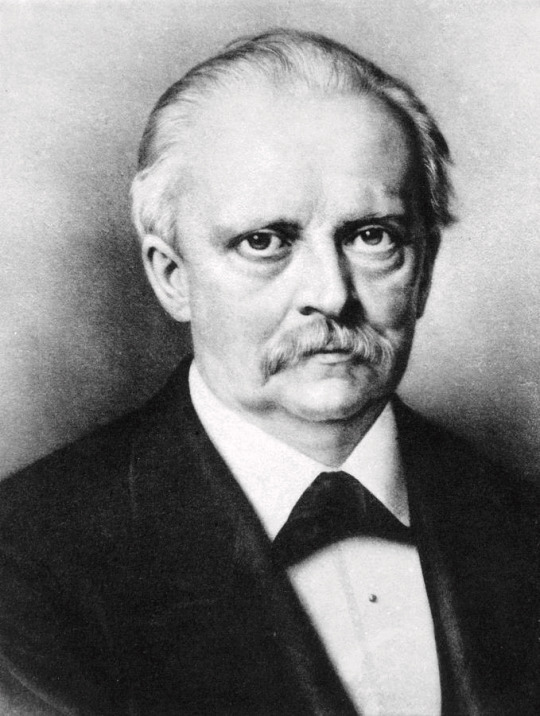
Hermann von Helmholtz (1821-1894)
- first person to record human reaction time, the amount of time between the onset of a stimulus and the person’s response to it.

Wilhelm Wundt (1832-1920)
- started out as Helmholtz’s research assistant
- taught the first course in scientific or “experimental” psychology at the University of Heidelberg in Germany (1867)
- published the first psychology textbook (1874)
- opened the world’s first psychology lab at the University of Leipzig (1879)
- came up with structuralism, an approach to psychology that attempted to isolate & analyze the mind’s basic elements

Edward Titchener (1867-1927)
- pioneered the technique of introspection, which is the analysis of subjective experience by trained observers
- identified three basic dimensions of sensation (pleasure/pain, strain/relaxation, excitation/quiescence) which have held up pretty well as ways to describe subjective experiences across multiple languages

William James (1842-1910)
- helped to develop functionalism, a new approach to psychology that emphasized the adaptive significance of mental processes
- inspired by Darwin’s theory of natural selection, which refers to the process by which the specific attributes that promote an organism’s survival & reproduction become more prevalent over time.

Pierre Janet (1859-1947) and Jean-Martin Charcot (1825-1893)
- French physicians who coined the term hysteria: a loss of function that has no obvious physical origin.
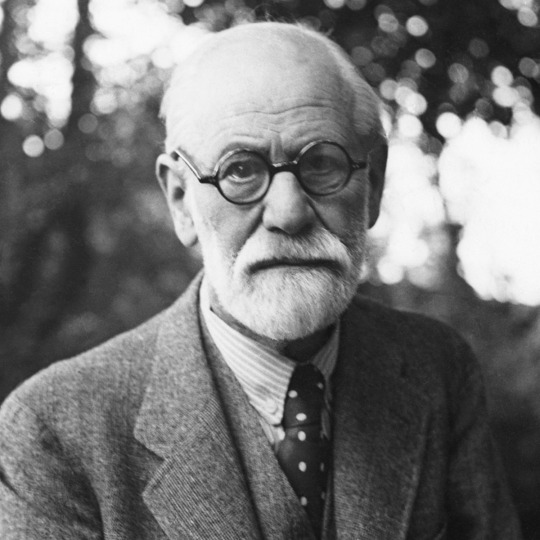
Sigmund Freud (1856-1939)
- began his career studying the sexual anatomy of eels and the effects of cocaine
- went to Paris on a fellowship to study with Charcot (1885) and began treating patients with hysteria and other “nervous disorders” when he returned to Vienna
- suspected that many of his patients had suffered a childhood experience so painful that they could not allow themselves to remember it
- he reasoned that these memories had been hidden from consciousness and relegated to a place Freud called the unconscious, the part of the mind that contains information of which people are not aware.
- developed a theory of the mind known as psychoanalytic theory, which is a general theory that emphasizes the influence of the unconscious on feelings, thoughts, and behaviors.
- Psychoanalysis is a therapy that aims to give people insight into the contents of their unconscious minds.

John Broadus Watson (1878-1958)
- favored behaviorism, an approach to psychology that restricts scientific inquiry to observable behavior.
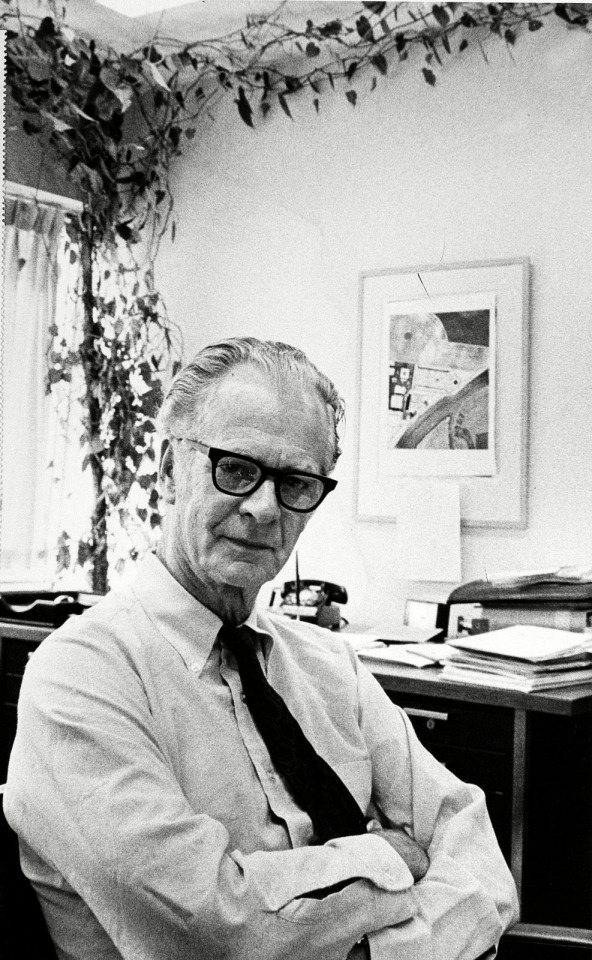
Burrhus Frederick Skinner (1904-1990)
- graduated from Hamilton College with intentions of becoming a writer (1926)
- started grad school in psychology dept @ Harvard University (1928)
- proposed the principle of reinforcement: any behavior that is rewarded will be repeated and any behavior that is not, won’t.
- argued that this simple principle applied from tasks like rats finding food, all the way up to complex human behaviors
- By the 1940s, the majority of experimental psychologists had been converted to Skinner’s “radical behaviorism.”
- His theories spread across the globe and became the foundation of classroom education, government programs, psychological therapies, and child-rearing practicies.
- wrote two controversial best-sellers- Walden II (1948) and Beyond Freedom & Dignity (1971)
- in these books, Skinner claimed that free will was an illusion, and that the world could solve its most pressing problems if it would only realize that behavior is nothing more than the sum of its consequences, that people do what they are reinforced for doing, and that “choosing” or “deciding” are dangerous fictions.
- I’m not wild about this guy.
- In 1957, Skinner published a book called Verbal Behavior, in which he offered a behaviorist account of how children learn language. Scroll down for Chomsky’s response.
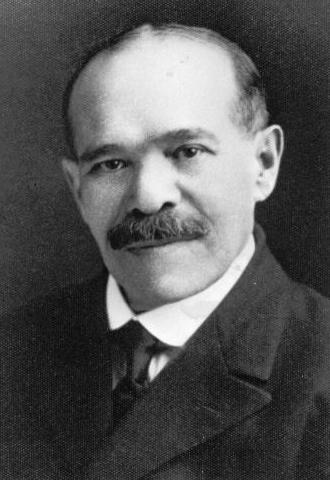
Max Wertheimer (1880-1943)
- along with his colleagues, developed gestalt psychology, an approach to psychology that emphasized the way in which the mind creates perceptual experience.

Sir Frederic Bartlett (1889-1969)
- OMG he looks like Grandpa Munster
- argued that our memory is not a simple recording device, but rather, our minds use their theories of how the world usually works to construct our memories of past experiences

Jean Piaget (1896-1980)
- extremely benevolent energy; would definitely let him babysit
- concluded that the mind has theories about how the world works, and because small children have not yet developed these theories, they perceive the world in a fundamentally different way than adults do.
- along with colleagues such as Lev Vygotsky (1896-1934), he created developmental psychology, which is the study of the ways in which psychological phenomena change over the life span.
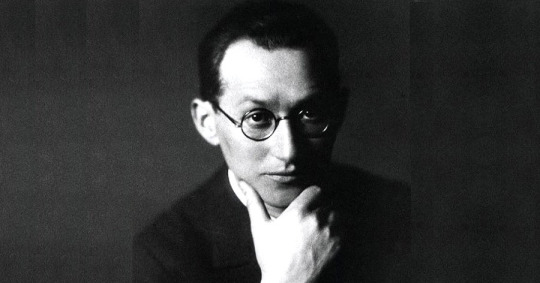
Kurt Lewin (1890-1947)
- fled Europe in the early 1930s when Hitler came to power
- began working as a professor at MIT and started the Institute for Group Dynamics
- he believed that behavior is not a function of the environment, but of the person’s subjective construct of their environment. Responses do not depend on stimuli, as the behaviorists claimed; rather, they depend on how people think about those stimuli.
- Lewin’s research gave birth to a new area of experimental psychology called social psychology: the study of the causes and consequences of sociality.

Solomon Asch (1907-1996)
- did early studies on the “primacy effect,” which shows that early information about a person changes the interpretation of later information, which is why first impressions matter so much.

George Armitage Miller (1920-2012)
- looks like the unholy offspring of Christopher Walken & Willem Dafoe
- he’s from West Virginia!
- one of the founders of cognitive psychology & cognitive neuroscience
- made significant contributions to psycholinguistics & the study of human communication
- discovered that human short-term memory is generally limited to holding about seven pieces of information, +/- 2
- “The power, the honors, the authority, the textbooks, the money, everything in psychology was owned by the behavioristic school. Those who didn’t give a damn, in clinical or social psychology, went off and did their own thing.”
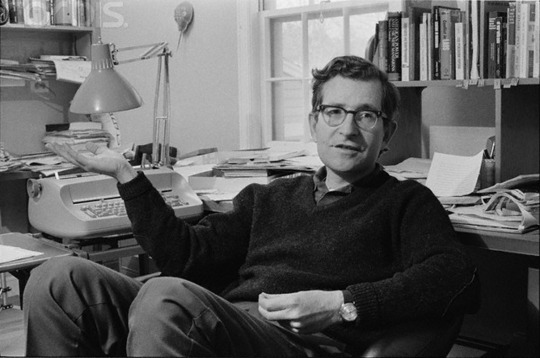
Avram Noam Chomsky (born Dec 7, 1928)
- the most productive Sagittarian to ever live
- modern linguistics daddy
- one of the founders of the field of cognitive science
- a major figure in analytic philosophy
- prolific author of more than 150 books, with a focus on history, politics, and social criticism
- ideologically aligned with libertarian socialism and anarcho-syndicalism
- answers emails from fans all the time and even goes on their podcasts/streams occasionally
- just a really sweet man
- in 1959, Chomsky dragged Skinner to hell with a devastating 33-page critique of his book, using formal mathematical logic to explain that his fave could NEVER
- everyone agreed, but what was going to take behaviorism’s place?

ENIAC (1945)
- A computer’s observable behavior was as simple as a rat’s. Present the computer with a stimulus and it will produce a response. But unlike a rat, we know exactly how the computer produces its response: by encoding information, storing it in memory, retrieving it on demand, and combining it in lawful ways.
- A computer’s circuits allow it to do things that (from the outside) look a lot like learning, reasoning, remembering, and maybe even thinking. If these words could be used to describe the physical information-processing operations that happen inside a machine, then surely it was legitimate to talk about them happening inside the human brain. If the brain is hardware, the mind is software.
- With the computer as their liberator and guiding metaphor, psychologists of the 1950s and 1960s suddenly felt empowered to study topics that had been ignored by the mainstream for decades.

Donald Broadbent (1926-1993)
- studied how people shift their attention from one stimulus to another
- developed the “single channel hypothesis”
- published a book called Perception and Communication (1958) that is still a classic of cognitive psychology
- suggested the Filter Model of Attention, which proposes the existence of a theoretical filter device, located between the incoming sensory register, and the short-term memory storage.
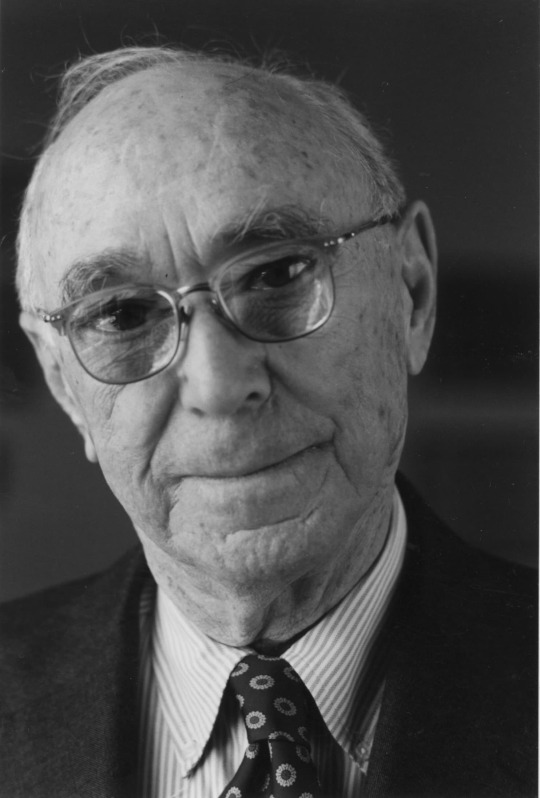
Jerome Bruner (1915-2016)
- studied how a person’s desires can shape their perceptions of physical objects
- made significant contributions to human cognitive psychology, cognitive learning theory, educational psychology
- served under General Dwight D. Eisenhower during WW2...in the Psychological Warfare Division

George Sperling (born 1934)
- documented the existence of iconic memory
- is a Distinguished Professor at UC Irvine

Ulric Neisser (1928-2012)
- published Cognitive Psychology (1967), which was considered an attack on behavioral paradigms
- this book made him instantly famous and influential
- wrote Cognition & Reality (1976), in which he expressed three general criticisms of the field

In the 1960s, John Garcia (1917-2012) was studying how rats react to radiation sickness. He noticed that his rats instantly learned to associate their nausea with the taste of the food they ate just before getting sick, and they instantly developed an aversion to that food. On the other hand, no matter how much “training�� they received, his rats could not learn to associate their nausea with a flashing light or the sound of the buzzer. Pavlov had shown that when two stimuli are paired, animals will learn to associate one with the other, and it wasn’t supposed to matter what the stimuli were. It wasn’t supposed to matter...but it did.
Garcia thought that it meant every organism is evolved to respond to particular stimuli in particular ways, that animals come into the world “biologically prepared” to learn some associations more easily than others. In the real world, a rat’s nausea is *usually* caused by eating spoiled food, and although these were lab rats who had never lived in a sewer and never eaten spoiled food, their ancestors did. Millions of years of evolution had designed the rat brain so that it would quickly draw an association between an episode of nausea and the taste of a certain food. If rats were not blank slates, how could people (who are much more complex) be that way?

Edward Osborne Wilson (born June 10, 1929)
- influential biologist, frequently called “The New Darwin” or “Darwin’s natural heir”
- also called “the father of sociobiology” and “the father of biodiversity”
- world’s leading expert on ants
- in collaboration with mathematical ecologist Robert MacArthur, he developed the theory of island biogeography. This theory served as the foundation for both the unified neutral theory of biodiversity (Stephen Hubbell) and the entire field of conservation area design.
- Humanist Laureate of the International Academy of Humanism
- two-time winner of the Pulitzer Prize for General Nonfiction
- 3X New York Times bestselling author
- has published more than 430 scientific papers (so far)
- published Sociobiology: The New Synthesis (1975), in which he brought together research from many areas of science to support his claim that social behavior is shaped by natural selection
- although the book is mostly about rats, birds, and (especially) ants, its brief final chapter contained speculation about the evolutionary origins of human behavior, and that speculation had consequences
- some people said he was being racist, misogynist, and justifying eugenics, which (if you read his writings) is not anywhere close to the truth
- later on, some people DID deliberately spin his ideas into a “red-pilled” Chadly ideology which E.O. Wilson would Not Approve Of
- but other psychologists were intrigued, and had more questions, so they decided to start evolutionary psychology: the study of the ways in which the human mind has been shaped by natural selection

Donald Symons (born 1942)
- American anthropologist best known for studying gender differences in sexual promiscuity
- most recent work appears to have been a book he co-authored (with Catherine Salmon) called Warrior Lovers, an evolutionary analysis of slashfic (!)

John Tooby (born 1952) and Leda Cosmides (born 1957)
- currently Co-Directors of the Center for Evolutionary Psychology @ UC Santa Barbara
- partners in love and work for 29 years
- past research topics: how humans have “cognitive instincts” specialized for reasoning about cooperation, on the adaptive design of the emotions, on the evolution of sexual reproduction as a defense against parasites, on conflict in the genome, and on the cognitive foundations of cultural transmission.
- current research topics: the exploration of the evolved psychology underlying coalitions and intergroup conflict, the evolutionary psychology of anger, the motivational basis of the aversion to incest and within family altruism, and the cross-cultural validation of human psychological universals.

David Buss (born April 14, 1953)
- primary topics of his research include male mating strategies, conflict between the sexes, social status, social reputation, prestige, the emotion of jealousy, homicide, anti-homicide defenses, and (most recently) stalking.
- has published 9 books and over 200 scientific articles

American Psychological Association (APA)
- founded July 1892 by William James and six friends/colleagues
- a few years after it was founded, Mary Whiton Calkins (1863-1930) became its President.

Calkins studied at Harvard with James and, over the course of her career, wrote four books and published more than 100 scientific papers.
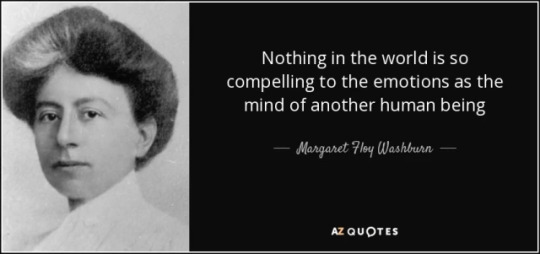
Margaret Floy Washburn (1871-1939) studied with Edward Titchener and was the first woman to receive a PhD in psychology. She also published numerous scientific papers and later went on to be APA’s President.
Today, women earn the majority of PhDs in psychology from American universities, make up a majority of the membership of APA, and hold a majority of its governance positions. There were no women at APA’s founding meeting, and no POC either, but that also changed quickly.

In 1920, Frances Cecil Sumner (1895-1954) became the first Black man with a PhD in psychology.
- never received a formal post-primary education, but his parents rigorously homeschooled him. He was able to pass college entrance exams at age 15 and graduated as valedictorian at age 19.
- area of focus was how to refute racism and bias, how to scientifically disprove the inferiority of Black people
- served as chair of the psychology department at Howard University from 1928 until his death in 1954
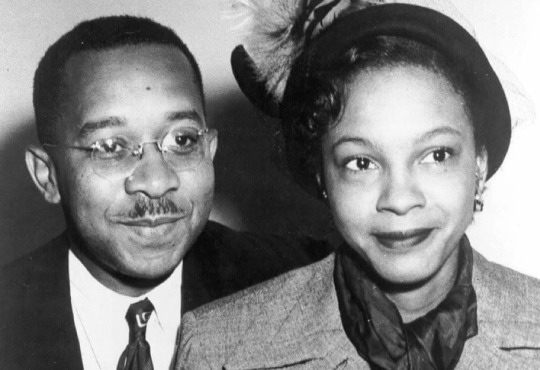
Kenneth Bancroft Clark (1914-2005) & Mamie Phipps Clark (1917-1983)
- psychologists and activists (US Civil Rights movement)
- iconic power couple
- founded the Northside Center for Child Development in Harlem & Harlem Youth Opportunities Unlimitied (HARYOU)
- Kenneth taught at City College of New York and was the first Black President of the APA.
- the Clarks testified as witnesses in Briggs vs. Elliott (1952), one of five cases combined into Brown v. Board of Education (1954). Their work contributed to the U.S. Supreme Court’s decision that racial segregation in public education was unconstitutional.
- Mamie was one of the first Black women to earn a PhD in psychology (from Columbia University). She was the second Black person to earn a PhD from Columbia. Despite her advisor being PRO-segregation (what the fuck?!?), she still managed to finish her dissertation.
- Nobody would pay Mamie what she was worth or respect her ideas, so in the end, she created her own job and ran the Northside Center.
5 notes
·
View notes
